I haven’t talked much about Salerno, even though we have been using it as our home port (and loving doing so, by the way!!). As a city, it is a story in contrasts. Parts are modern and clean, others are dirty and old. (Not that this is specific to Salerno, but it is a bit different from some of the other “Disneyesque” cities along the Amalfi Coast.) Many of the walls are covered in uber colorful graffiti. Very few people speak English (not a complaint, just a fact). There are two marinas and ferry stops within a kilometer of each other. The city’s residents – some with pet dogs – make excellent use of the beach located next to one of the marinas (and where we are at anchor). Some residents are daily walkers – in the water. I think they use the water as a source of resistance and/or to protect their joints while walking back and forth. They are quick to respond with a smile and “Bonjourno” when you say it to them. The residents also enjoy socializing on the numerous benches located along the long promenade that is densely decorated with beautiful flowering trees.
In short, the city is both welcoming and very interesting.
My favorite day in Salerno was the day I visited the Arechi castle. I’d decided to walk, not because I didn’t know how to get a taxi (which I didn’t), but because I thought it would be a nice walk. It was. Google Maps took me through narrow streets, on wrong turns, in back alleys, etc. When it told me to turn onto a non-existent street, I just retraced my steps until I found a street going in the right direction, went down it, and checked the phone again. Once I was through the city, I followed a “regular” road to the castle.
But let’s learn a bit about this city before we talk about the castle. Here are quite a few facts and dates:
- 197 B.C. – Roman colony Salernum founded at site of former Etruscan town Irnthi
- 79 A.D. – Salerno was buried by the rain of ash and debris of the eruption of Vesuvius
- 5th-7th century – Roman Catholic diocese of Salerno established
- 9th century – Schola Medica Salernitana (the first medical school in the world) founded
- 774 – Duke Arechis II of Benevento relocates to Salerno
- 851 – Principality of Salerno established
- 870s – Salerno besieged by Arab forces
- 1076 – Salerno taken by forces of Norman Robert Guiscard
- 1194 – Salerno sacked by forces of Henry VI, Holy Roman Emperor
- 1260 – Port of Salerno construction begins
- 1419 – Salerno becomes part of the Kingdom of Naples and administrative center of its Principato Citeriore
- 1578 – Salerno sacked by “Muslim pirates”
- 1656 – Plague
- 1688 – Earthquake
- 1694 – Earthquake (c’mon, give this place a break!)
- 1799 – Salerno becomes part of the French client Parthenopean Republic
- 1866 – Naples–Salerno railway begins operating; Salerno railway station opens
- 1872 – Teatro municipale Giuseppe Verdi (Salerno) opens
- 1911 – Population: 45,682
- 1919 – U.S. Salernitana 1919 (football club) formed
- 1920 – Società salernitana di storia patria (history society) founded
- 1926 – Salerno Costa d’Amalfi Airport established
- 1936 – Population: 67,186
- 1937 – Salerno trolleybus begins operating
- 1943 – 9 September: Salerno besieged by Allied forces during World War II
- 1961 – Population: 117,363
- 1968 – University of Salerno established
- 2013 – Salerno metropolitan railway service begins operating; Population: 131,925
Now you’ve read some of my favorite facts and dates. I hope you enjoyed them! 🙂 I should mention that Salerno is also known for good food – as seems to be true for just about everywhere in Italy – so, don’t forget that.
Here are some pictures of the graffiti I mentioned, and several of the streets showing the varied nature of the city. Oh, and one of a puppet show we passed on the way back to Seahike after a day’s travel.
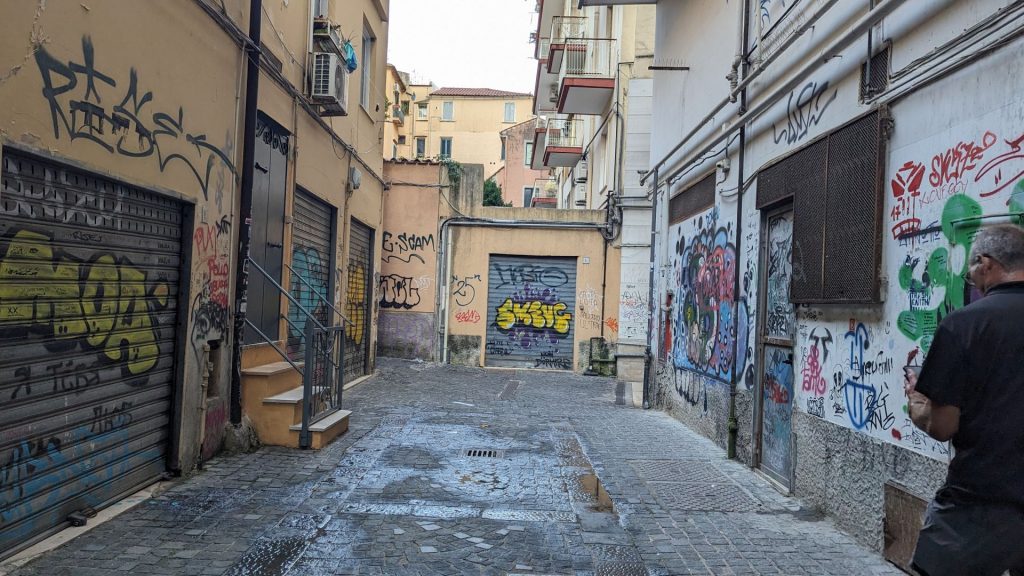
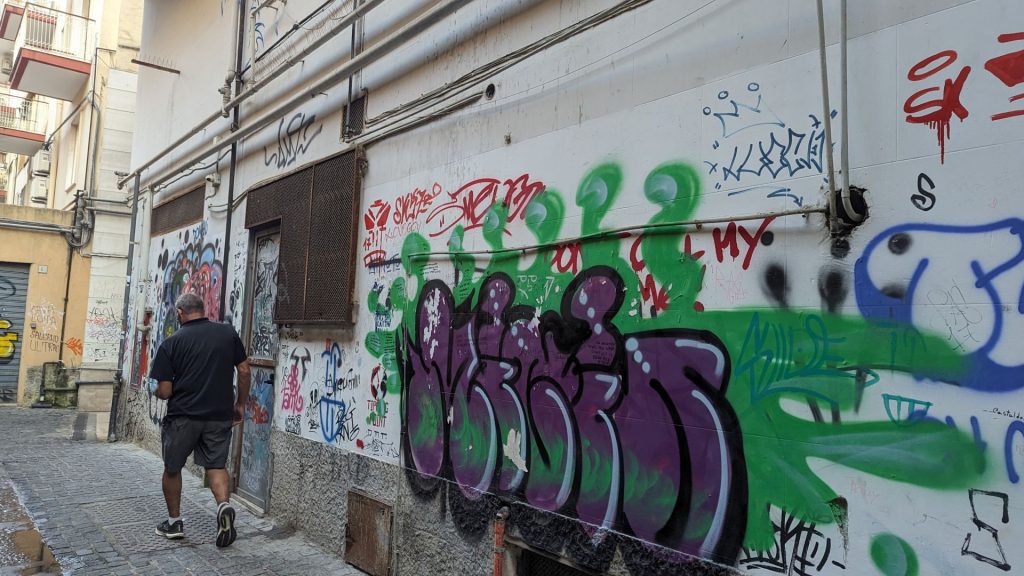
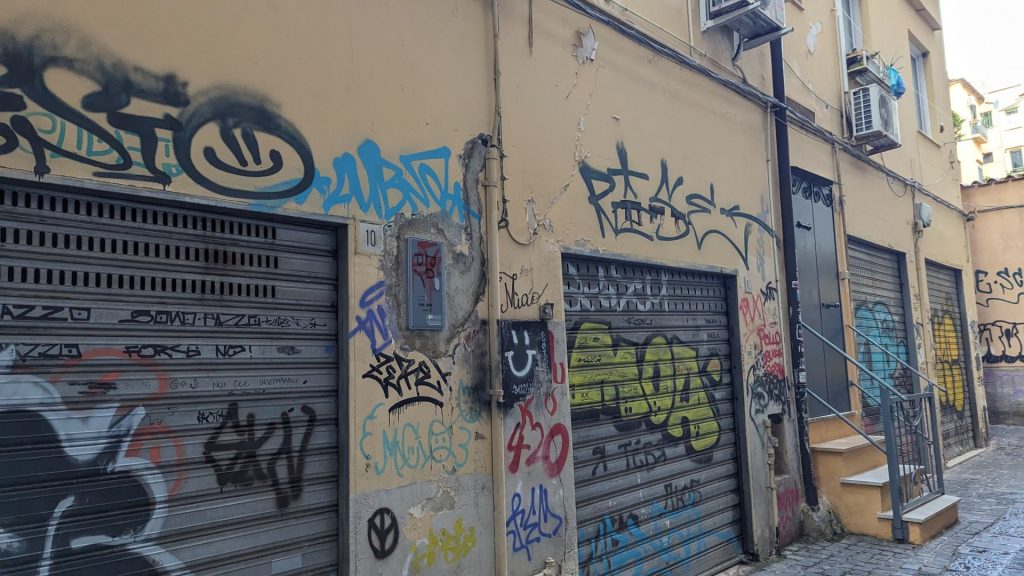

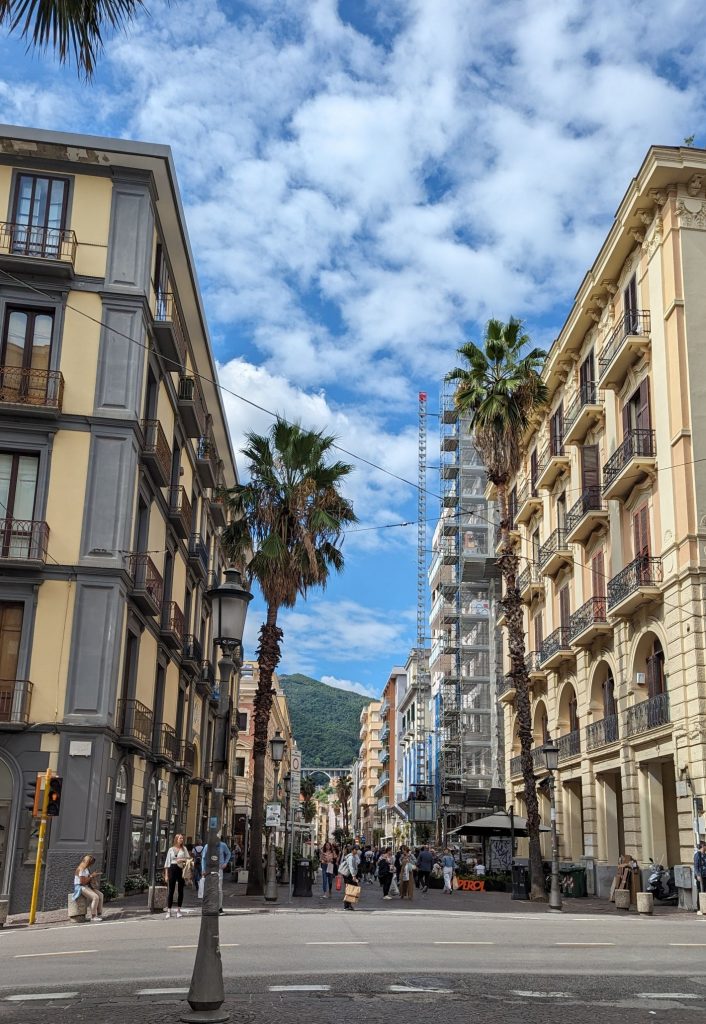
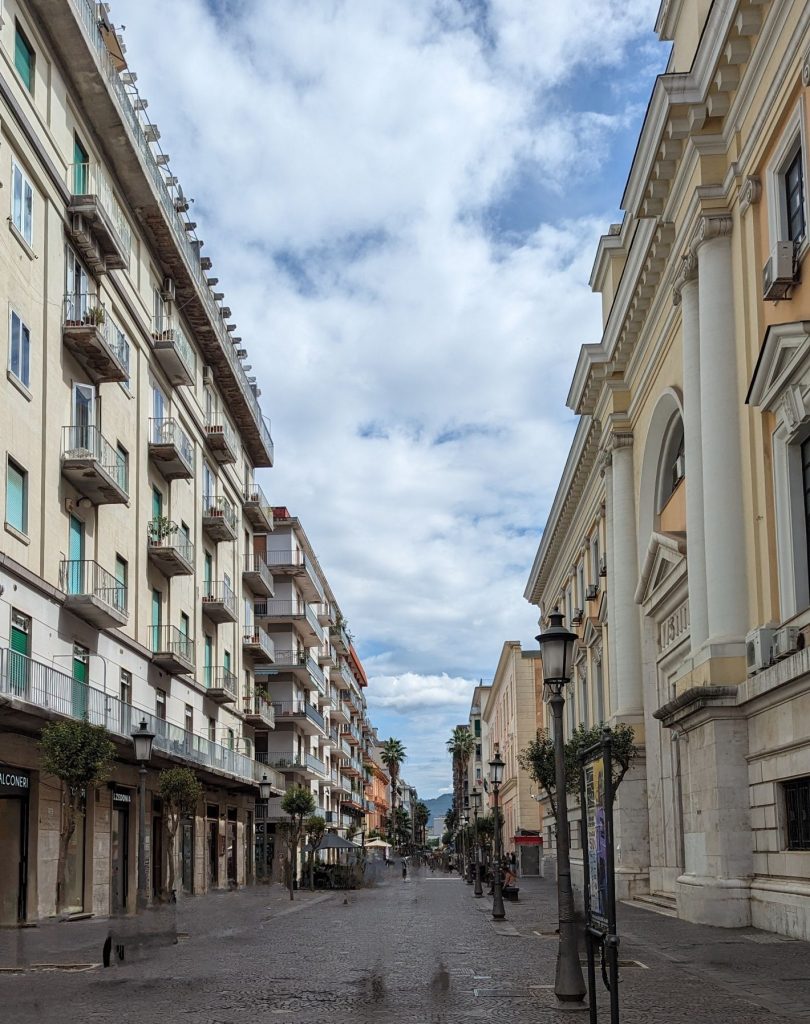
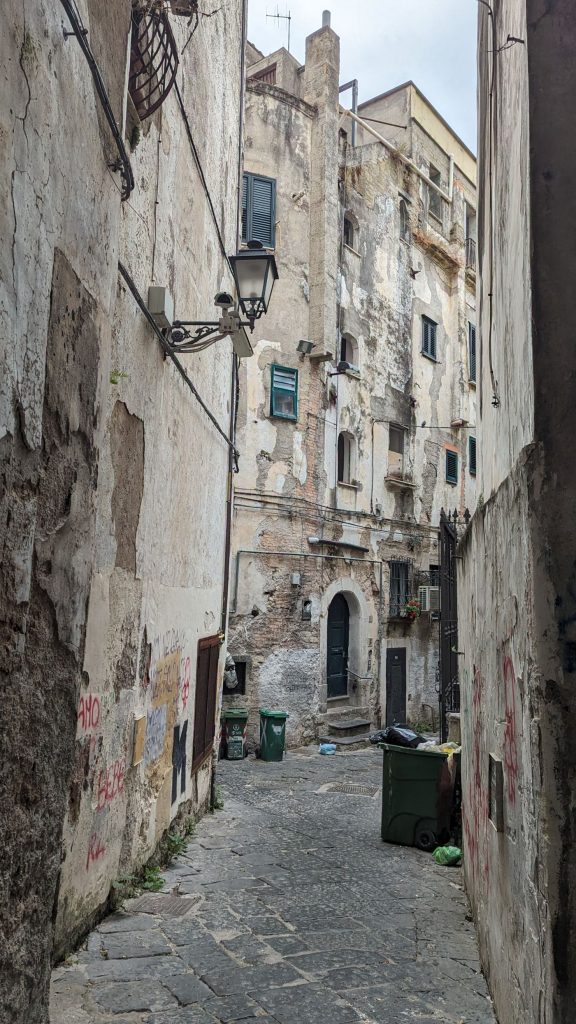
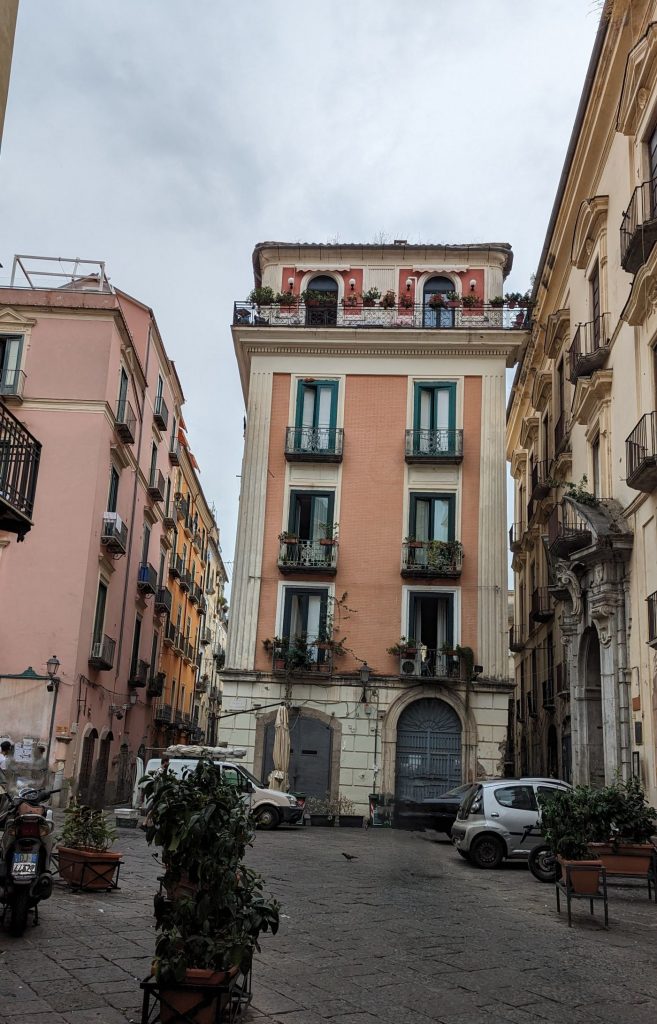
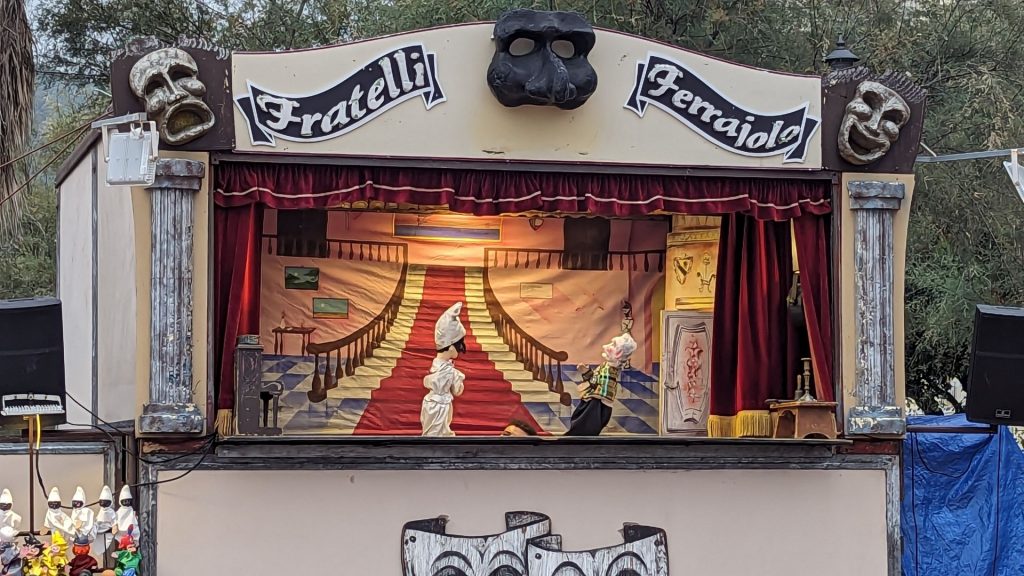
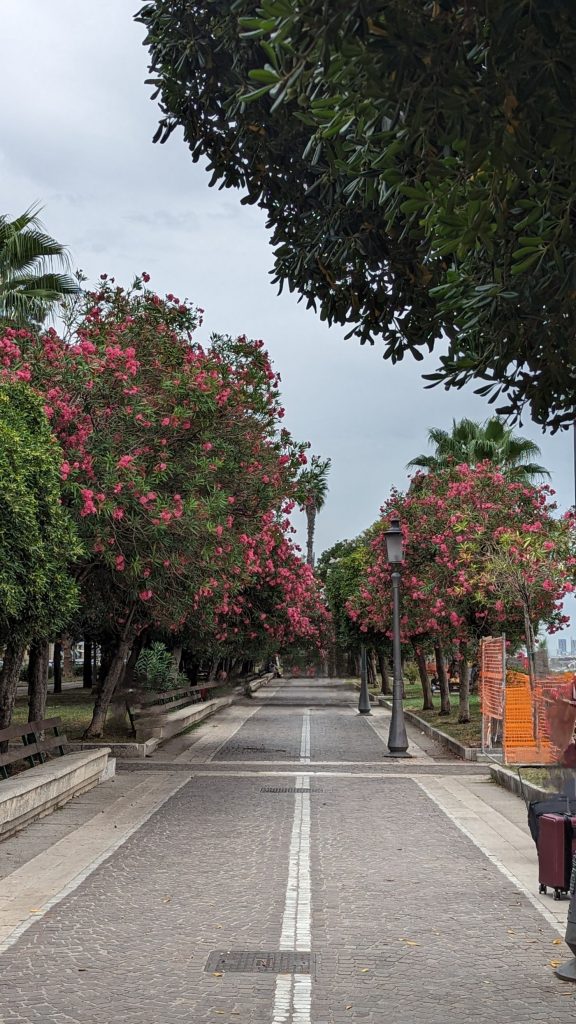
It is time to learn a bit about the castle and see some pictures.
In addition to currently being a choice location for weddings, ceremonies, events, conferences, or just to have a good meal at the restaurant, the Arechi Castle is a medieval castle. It is situated at a height of about 300 meters above sea level, overlooking the city and the Gulf of Salerno. It is called Arechi because the construction of this fortification is associated, traditionally, to the Lombard Duke Arechi II. The oldest building phase, according to some archaeological investigations, dates back to the sixth century, under the Byzantine rule (the construction of the oldest part of the ramparts made of sandstone blocks is characteristic of this period). Other scholars instead stated that the first fort on the hill Bonadies was built in the third century, in the late Roman period.
A Bit about Arechis II:
Arechis II (born c. 734 – died 26 August 787) was a Duke of Benevento, in Southern Italy. He sought to expand the Beneventos’ influence into areas of Italy that were still under Byzantine control, but he also had to defend against Charlemagne, who had conquered northern Italy.
Arechis was descended from the Lombards, who had invaded the Italian peninsula in the late sixth century. The Lombards established their kingdom in northern Italy. Its capital was at Pavia, and it also included two independent southern duchies—the Spoleto and Benevento.
Arechis was the son of Duke Liutprand, whom he succeeded in 758. Arechis continued to use the title duke of Benevento until the Lombard kingdom fell to Charlemagne in 774. Arechis adopted the title prince of Benevento after the fall of the kingdom —probably as a gesture of independence and defiance again Charlemagne — and continued to use it until his death in 787.
Arechis put resources into building projects in Salerno, including a new palace and castle. Salerno became an increasingly important port city during Arechis’ reign. Major southern monasteries, such as Montecassino and San Vincenzo al Volturno also received substantial donations from him.
Back to the Castle:
The castle assumed great military importance in the eighteenth century, with the Longobard Prince Arechi II who, although didn’t introduce major changes to the fort, made it the cornerstone of the defense system of the city. In 774 this prince considered the strategic position of the city of Salerno and made the residence of the court of the Duchy of Benevento. In fact the city was a bridgehead for trade and to control trade with other regions of the Mediterranean. Hence his attention to the fortifications: the castle became the vertex of a triangular defense system, the walls were falling down along the slopes of the hill Bonadies girdling all ancient Salernum to the sea.
The castle currently consists of a central section protected by towers, joined together with crenellated walls. To the Norman-Angevin period belongs a tower called the Bastille, on a hill overlooking Mount Bonadies northward; built to ensure control of the castle on the north, was so called because during the 800 mistakenly it was considered a prison (the real prisons were in the castle itself).
After a long period of neglect following the unification of Italy, the castle, in 1960, became owned by the Province of Salerno which began the restoration work. On March 1st 1992, the Italian Post Office dedicated a postage stamp to it.
The castle also houses a museum that contains large collections of coins and medieval ceramics found during the renovation.
And now, pictures on the way to the castle, from the museum and the castle, and back to Salerno.
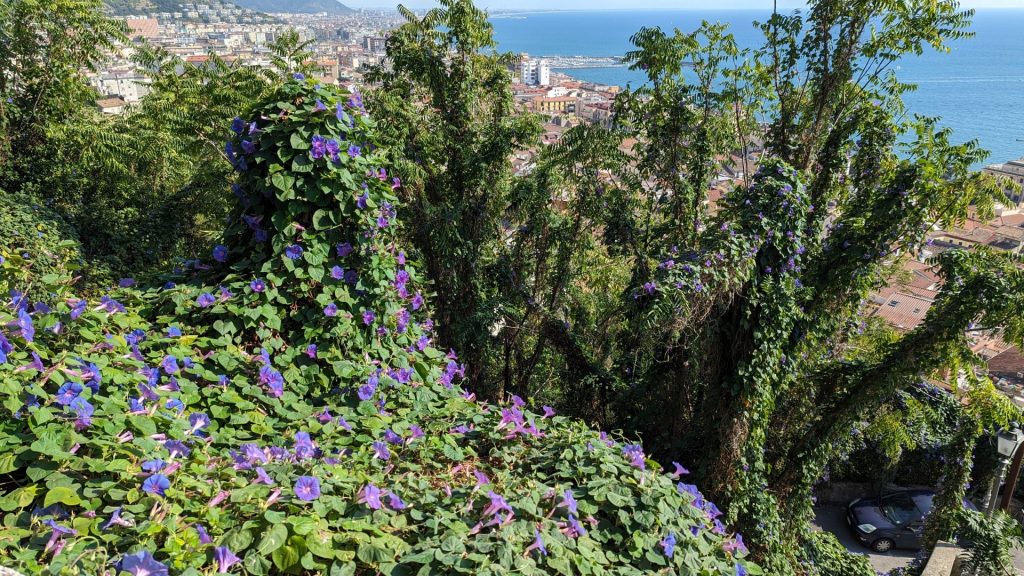
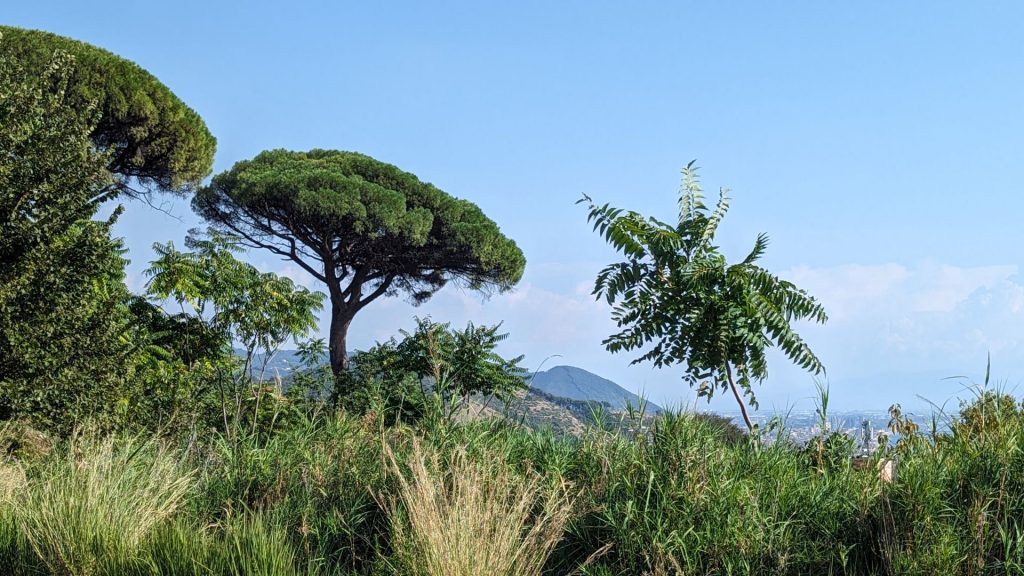
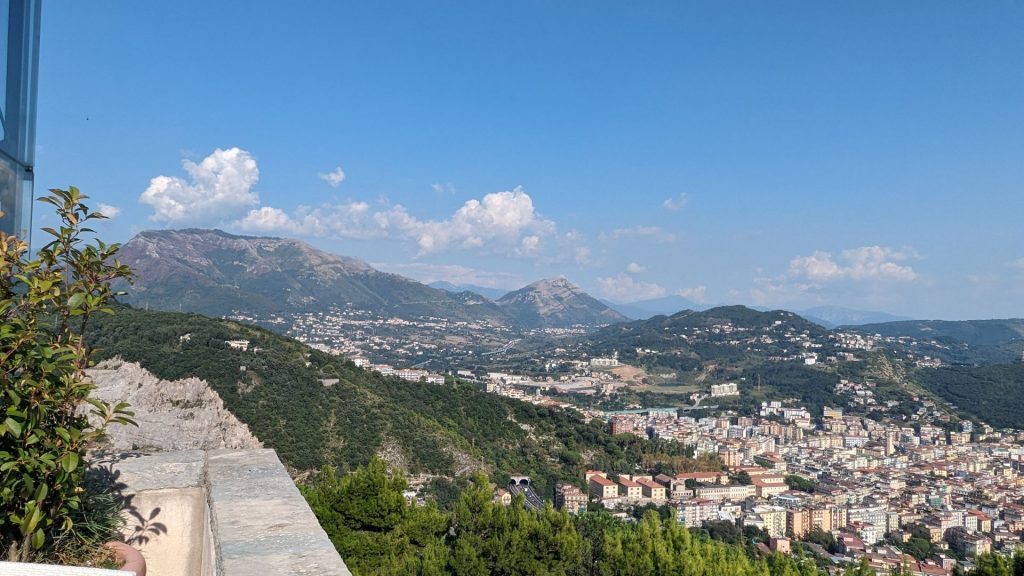
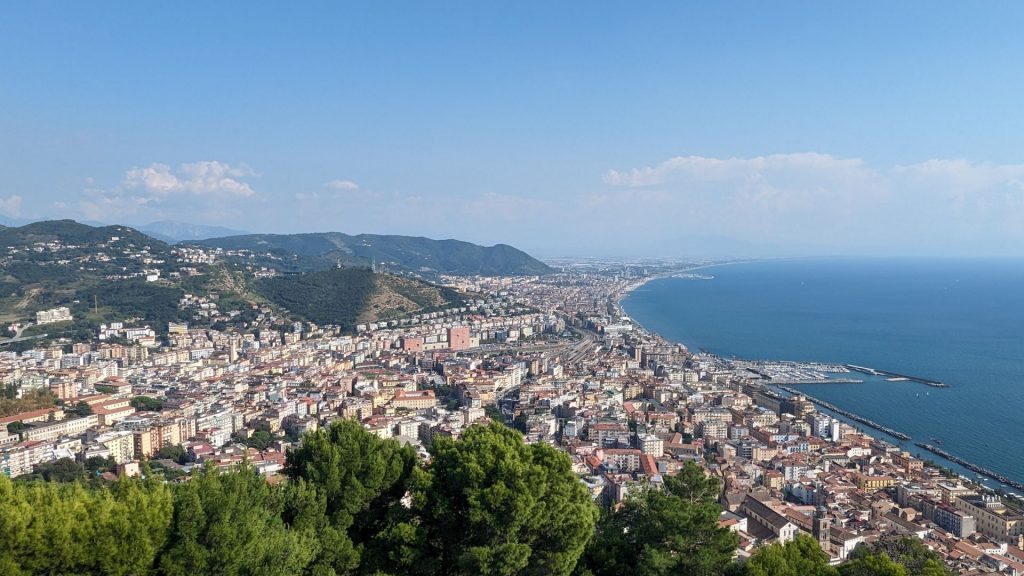
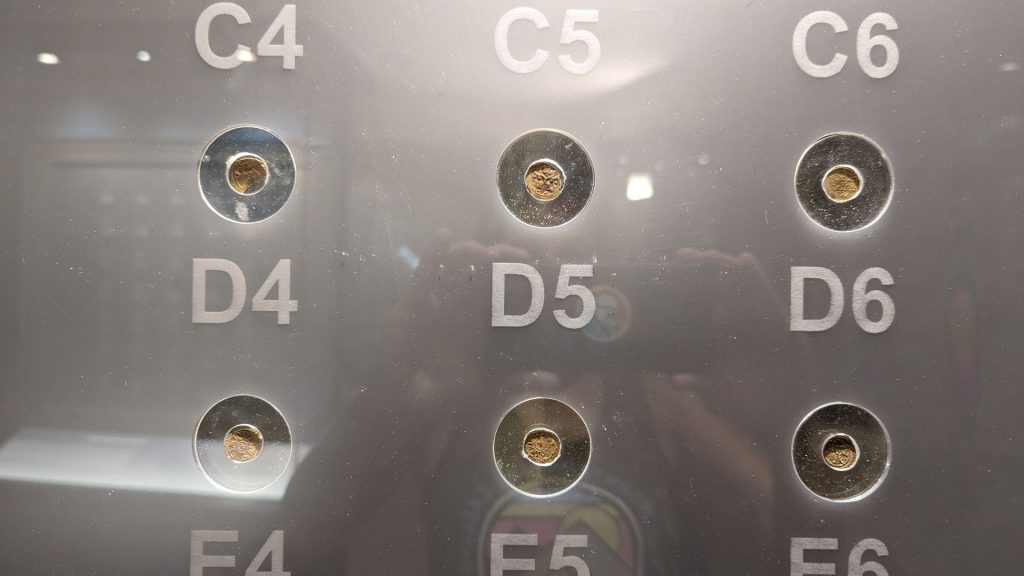
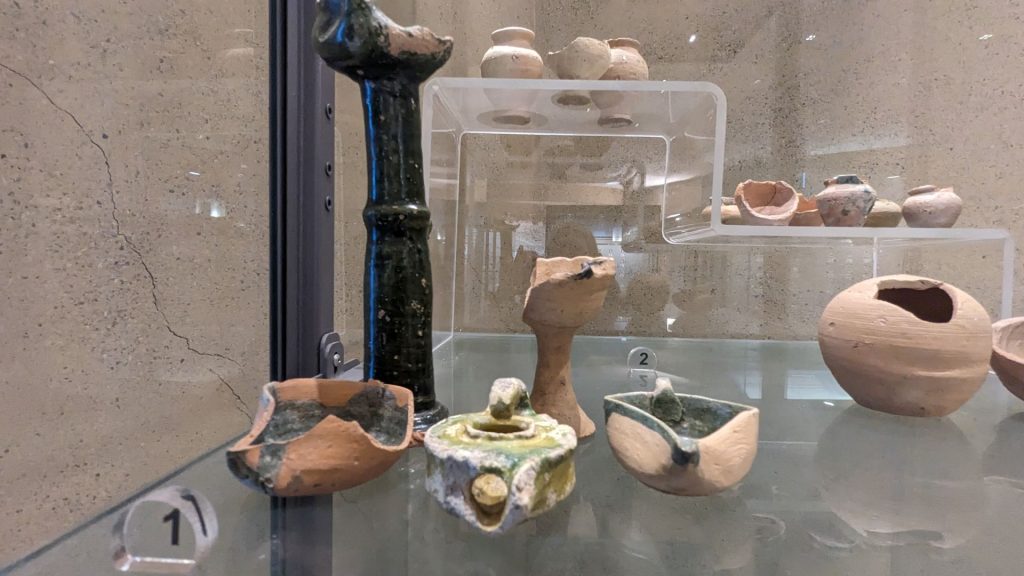
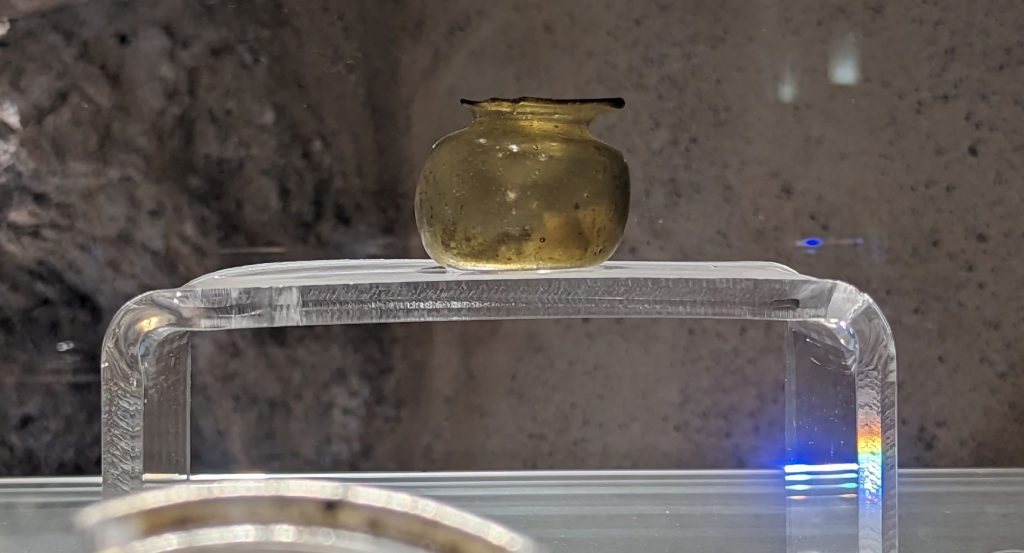
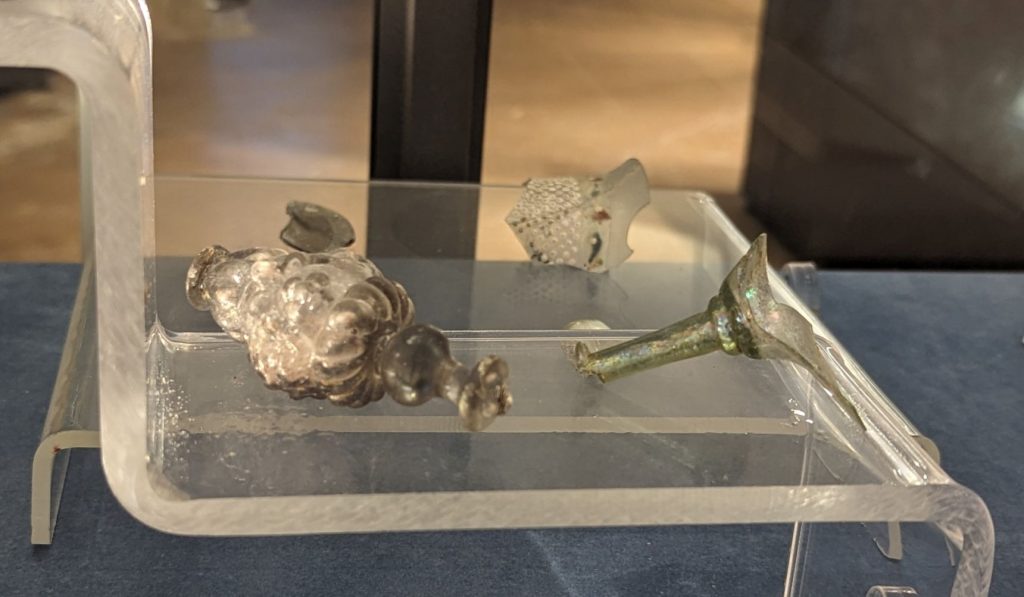
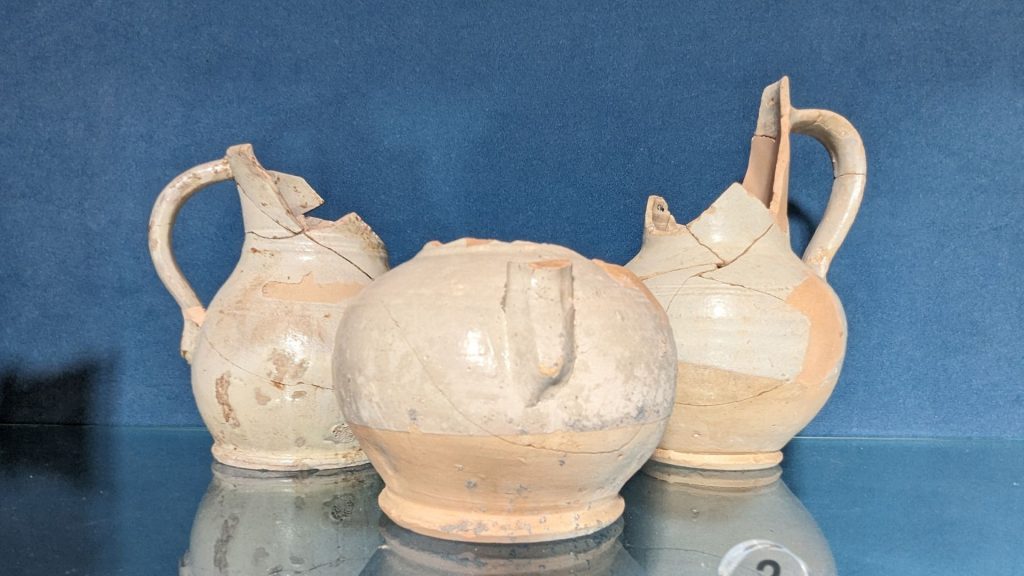
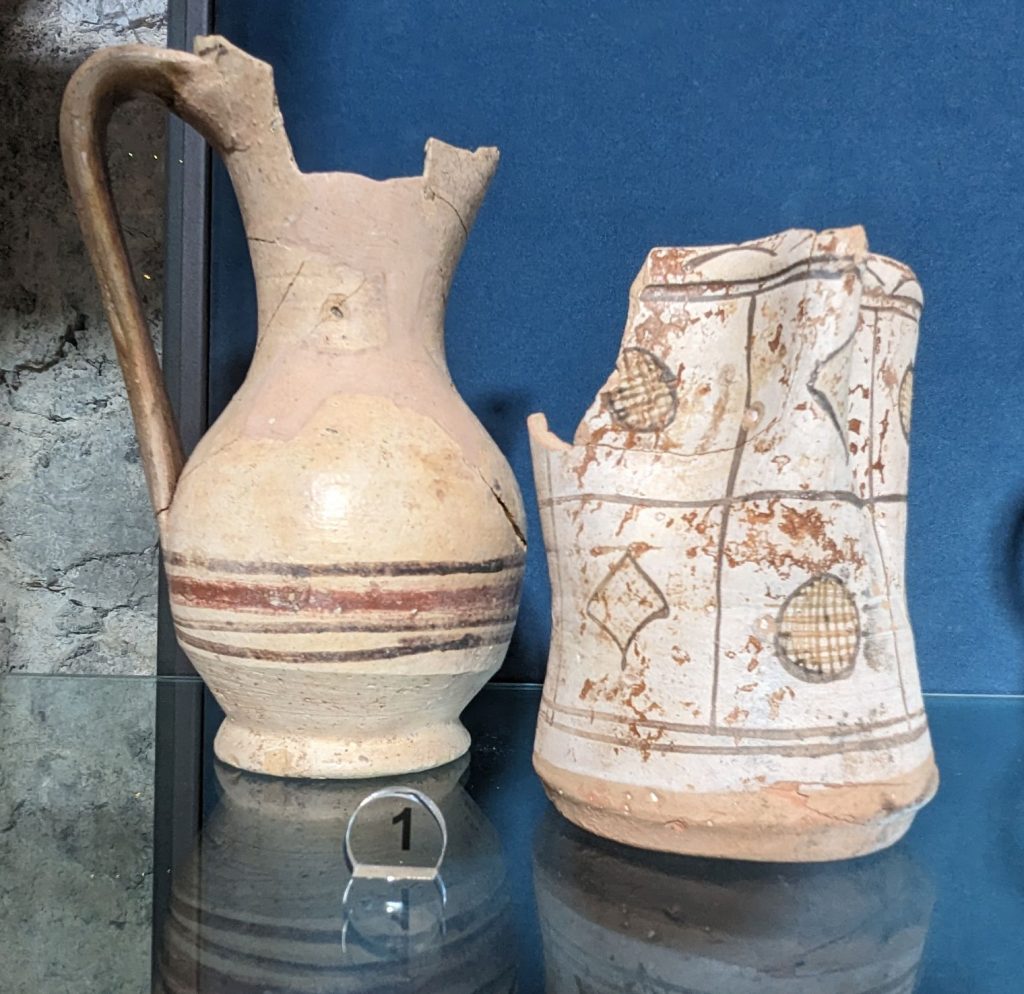
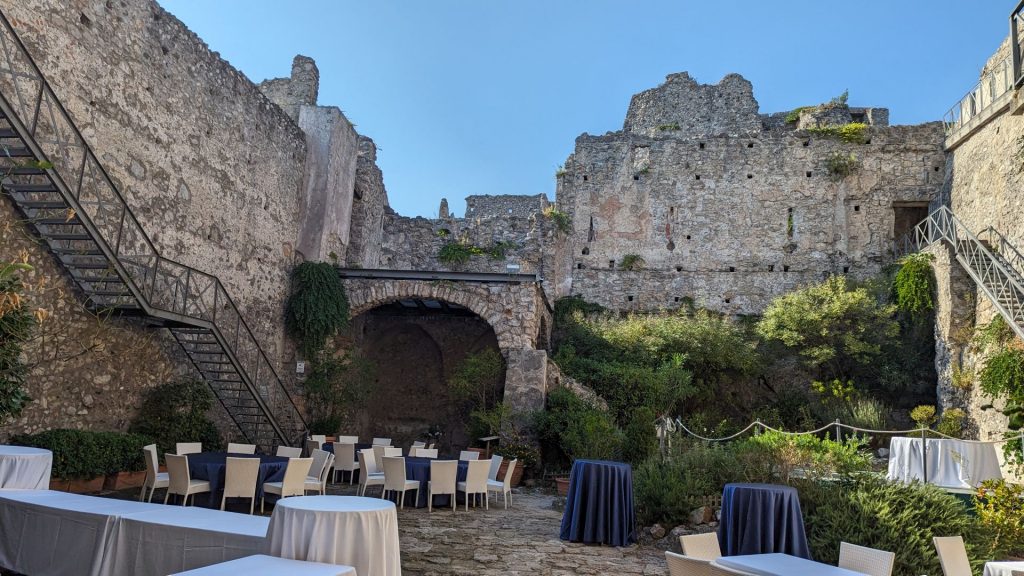
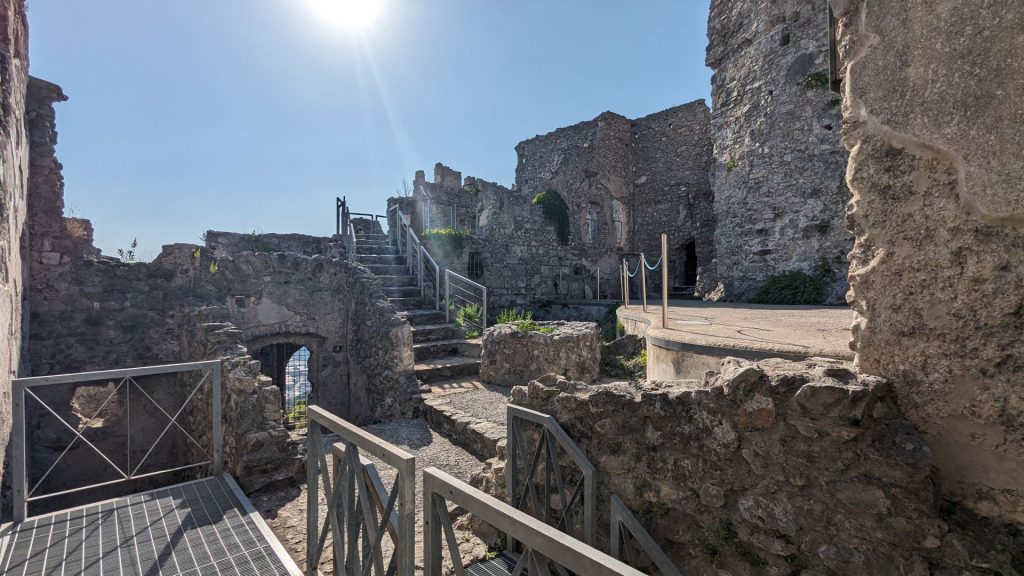
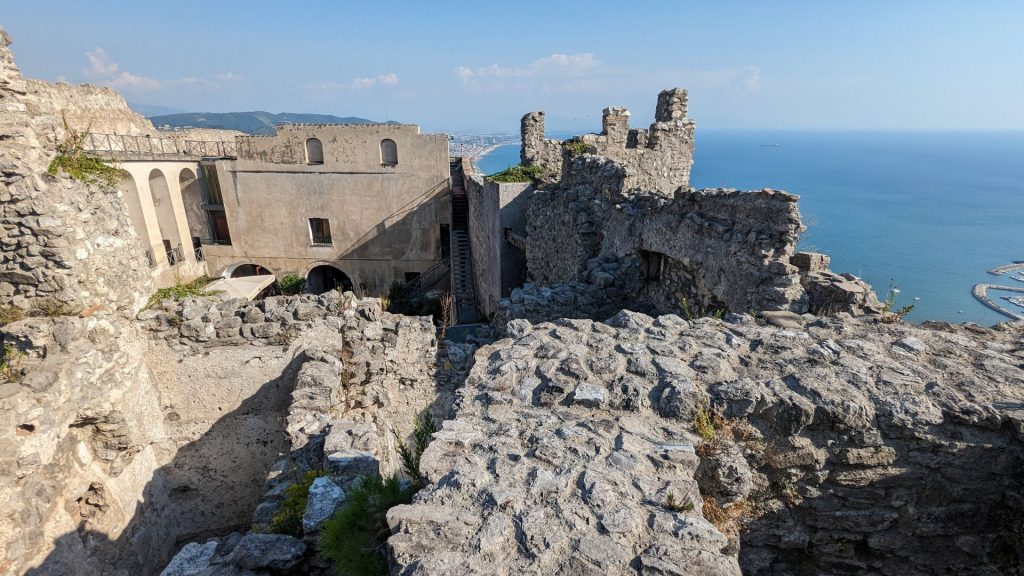
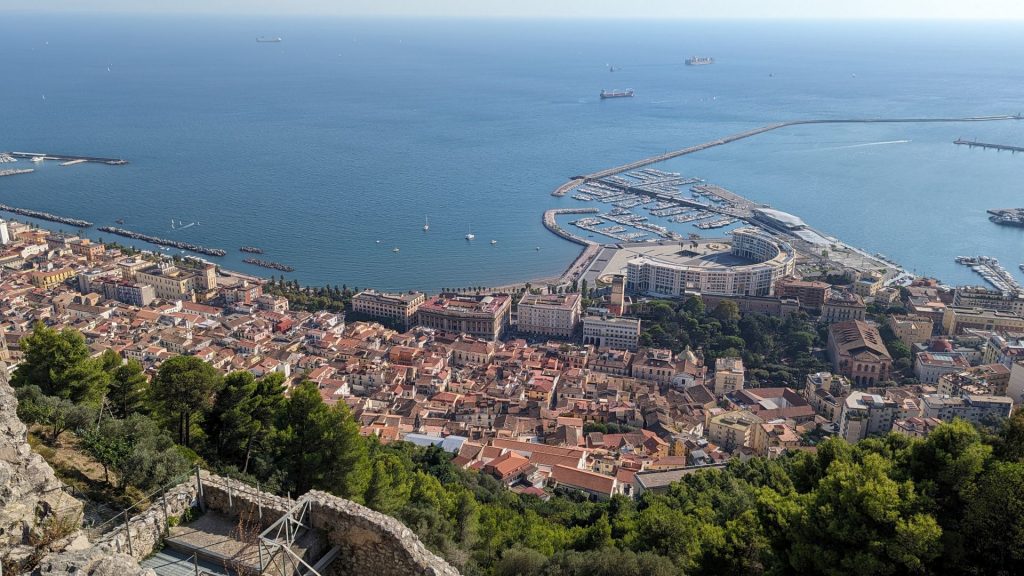
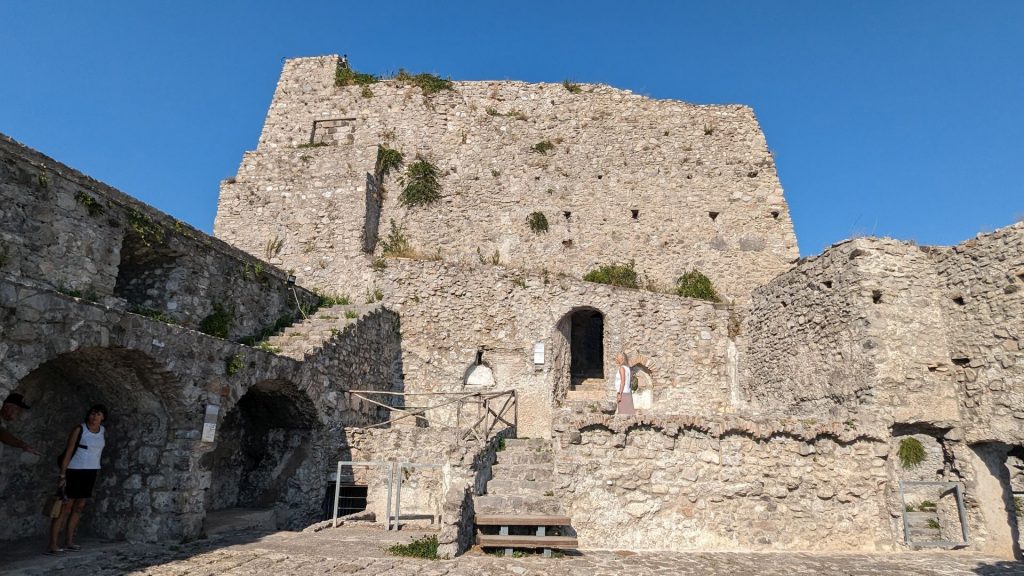
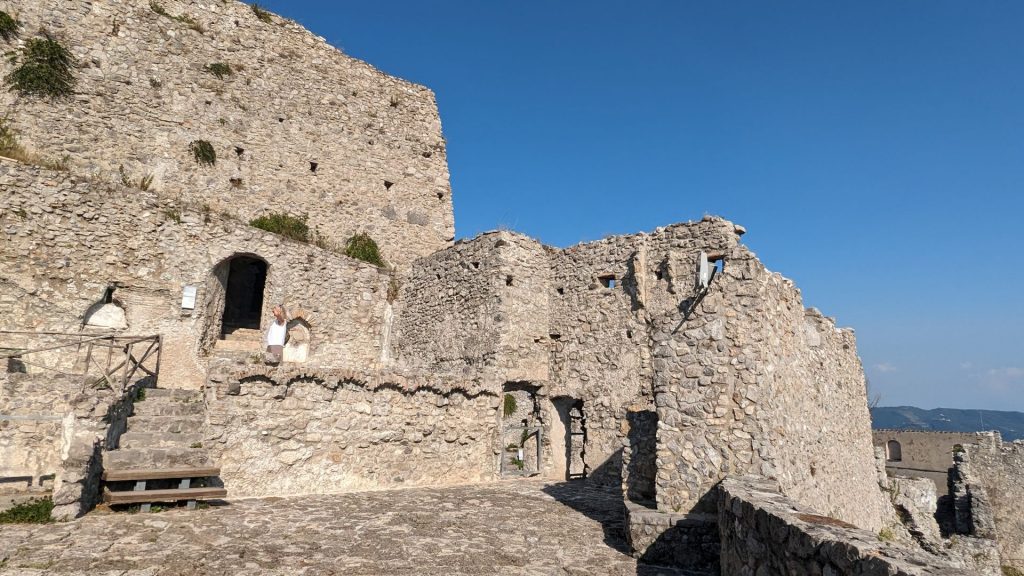
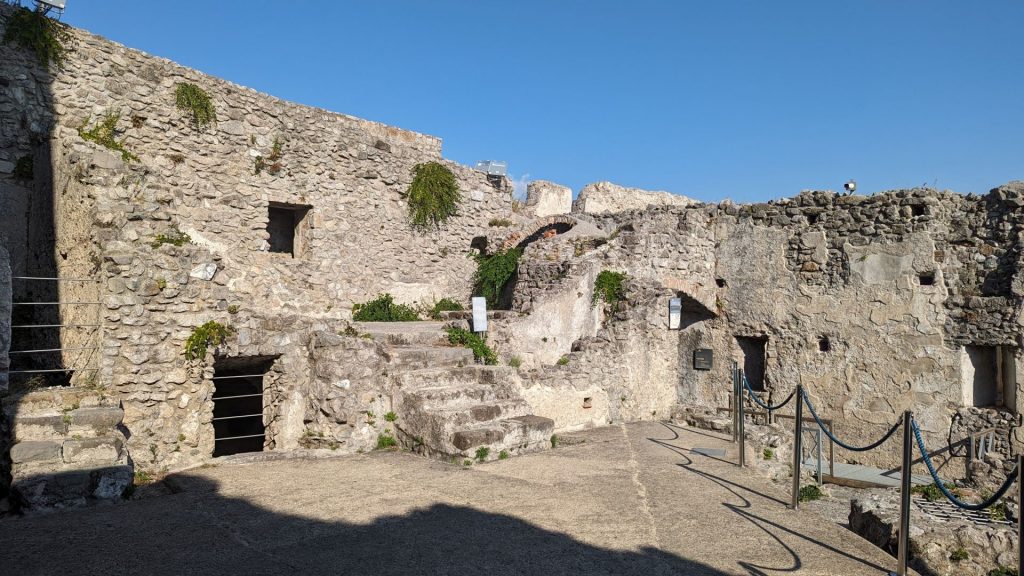
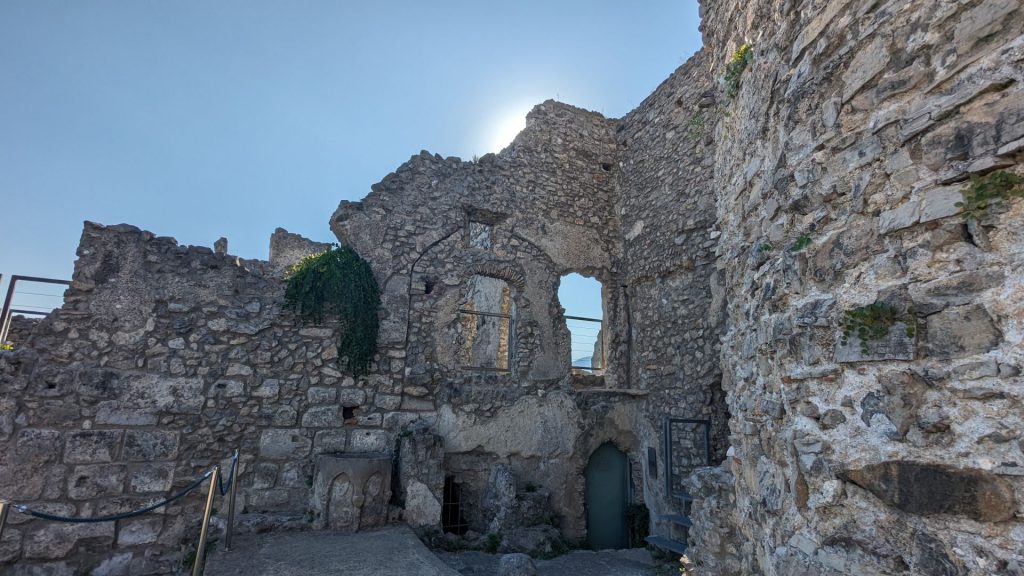
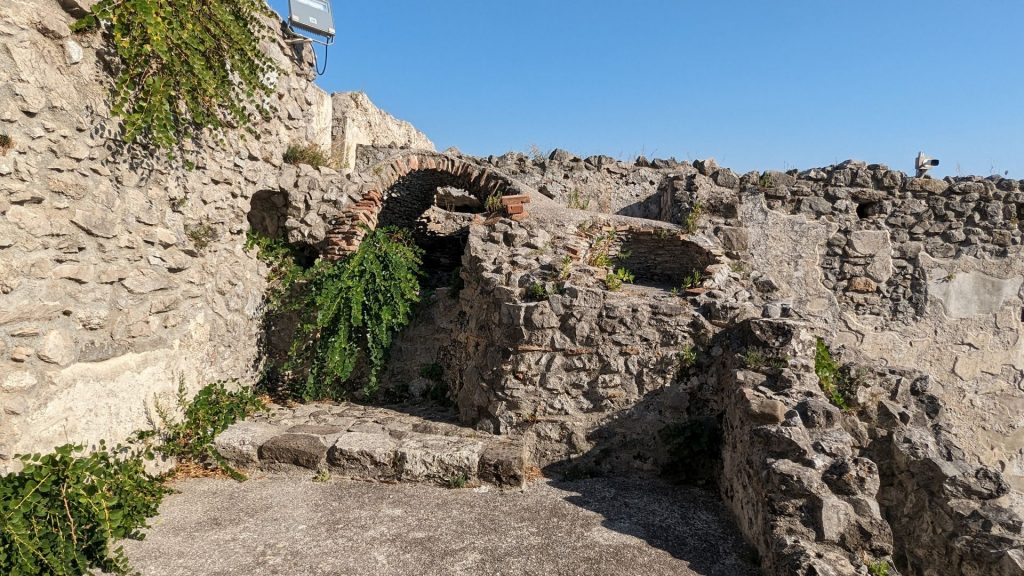
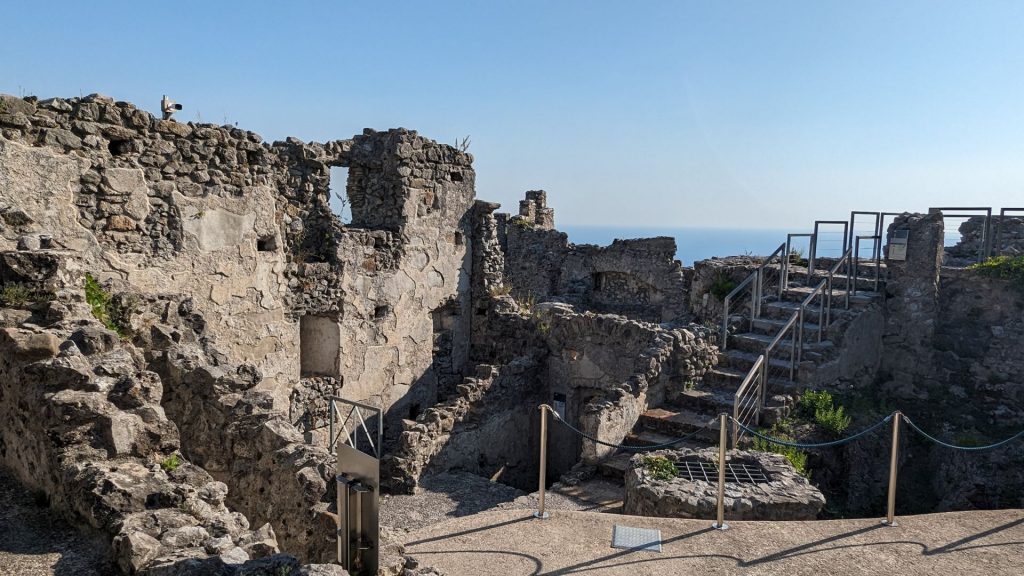
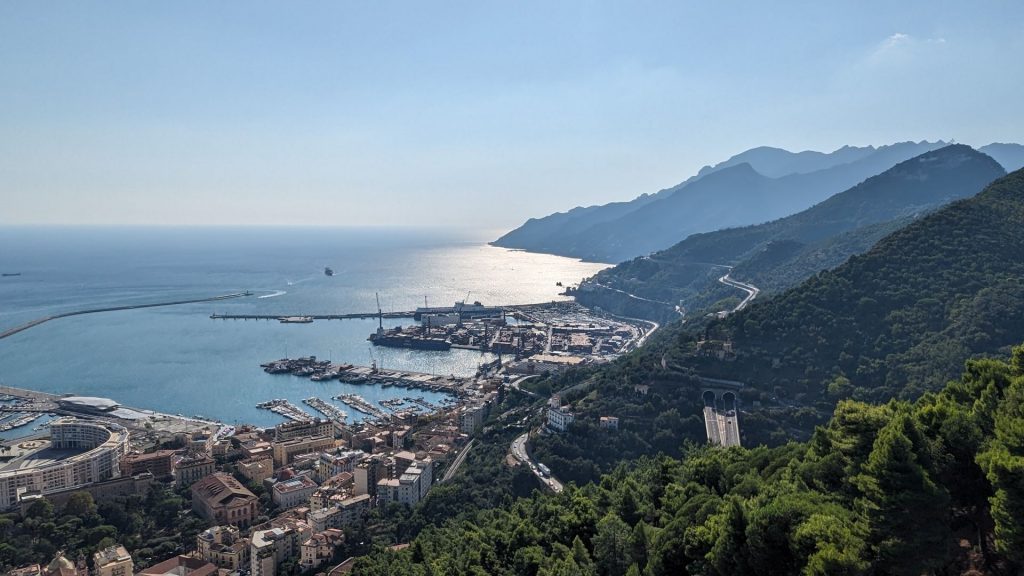
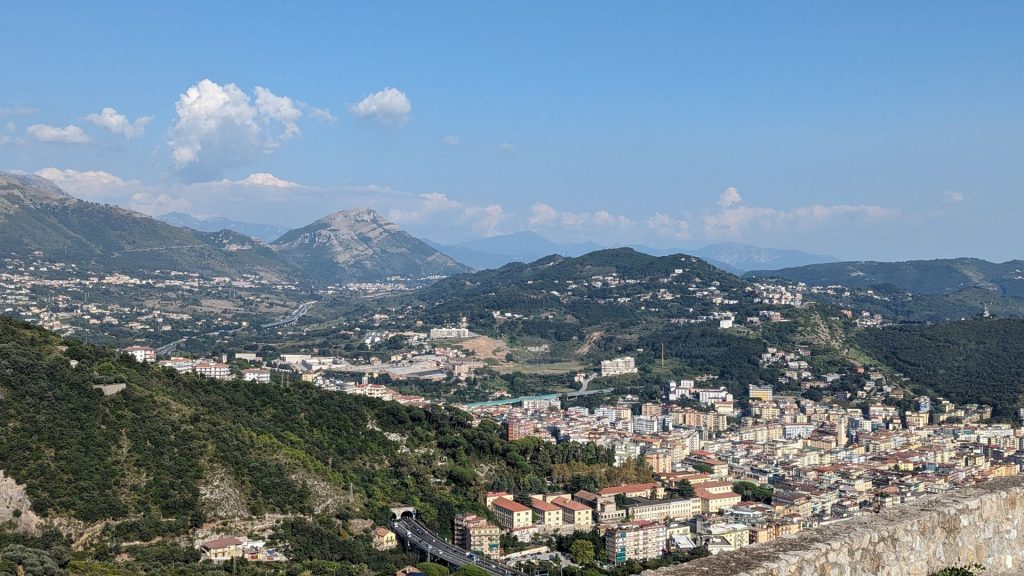
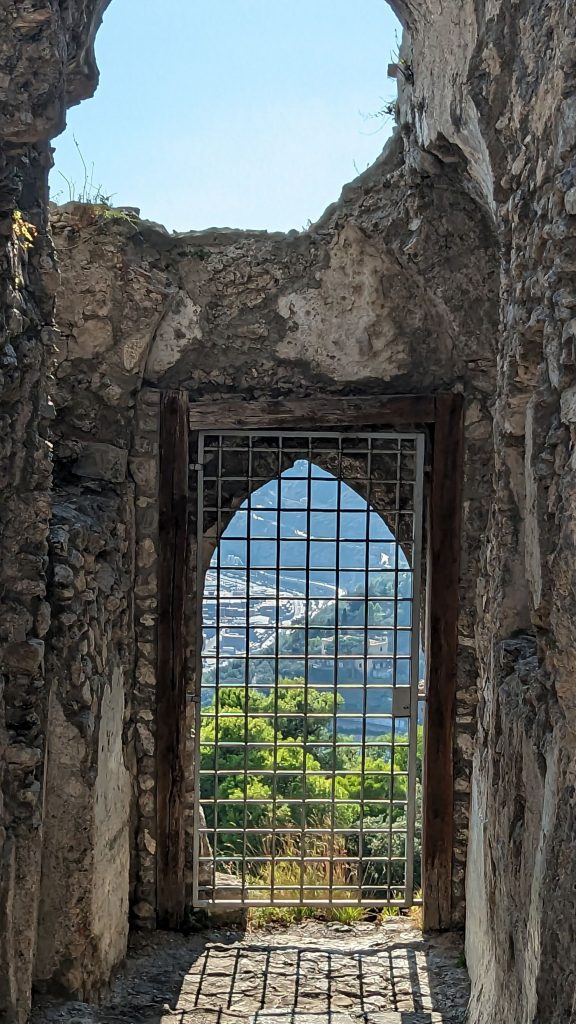
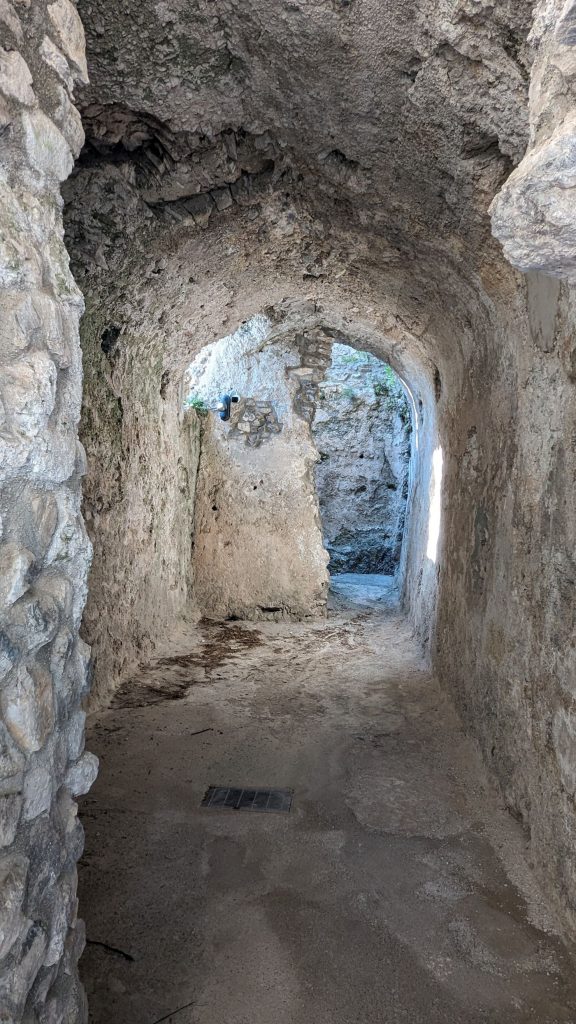
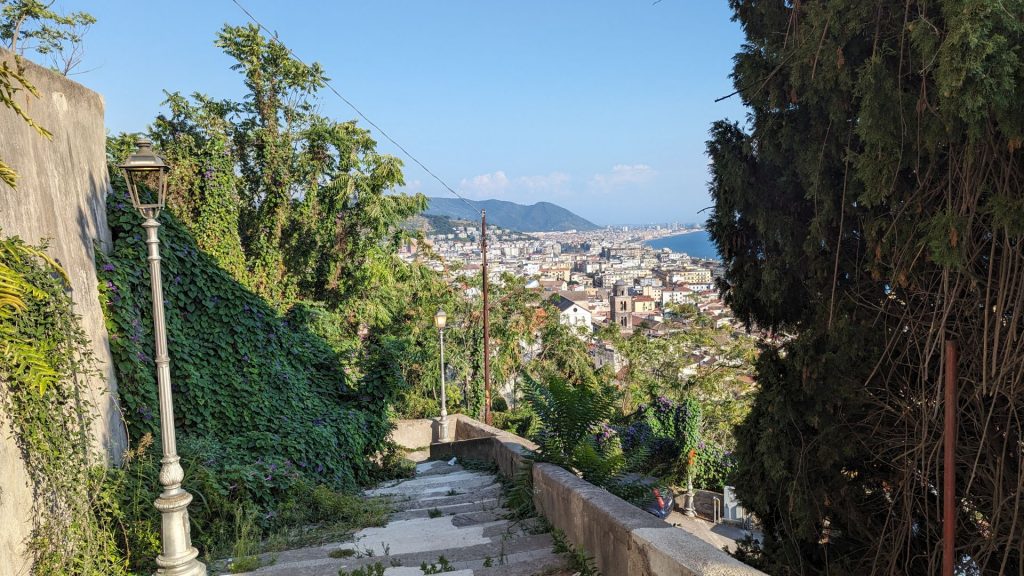
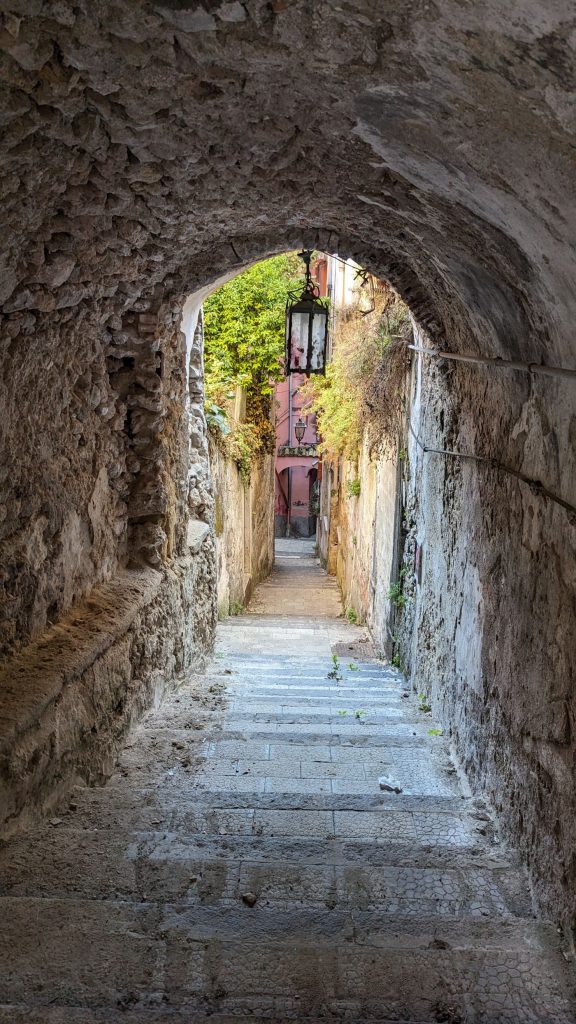
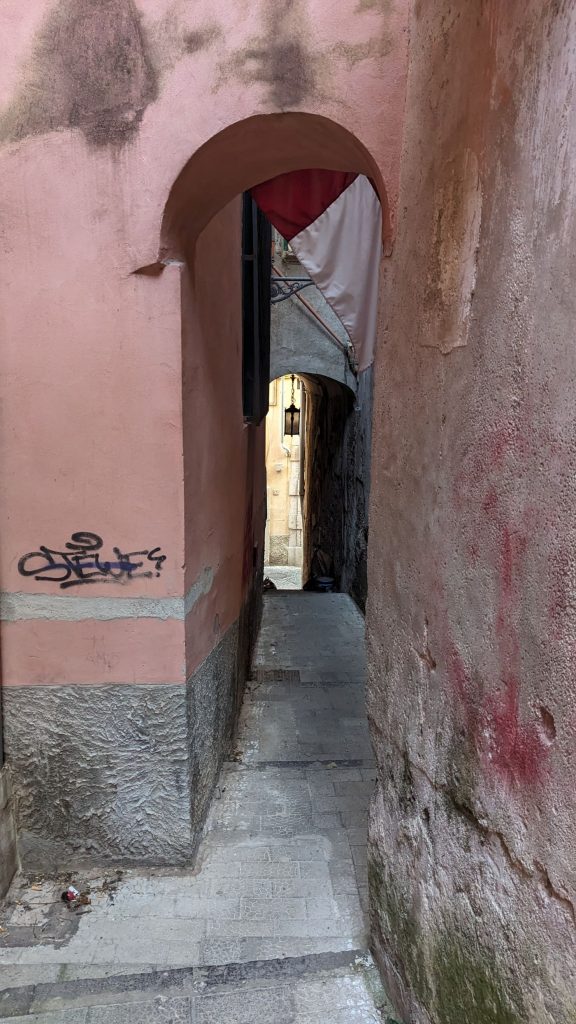
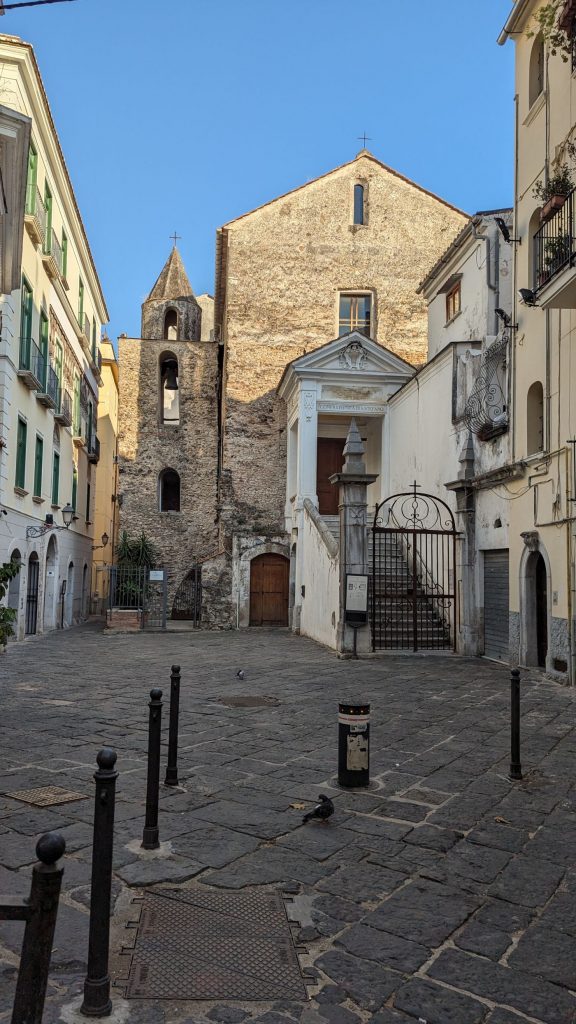
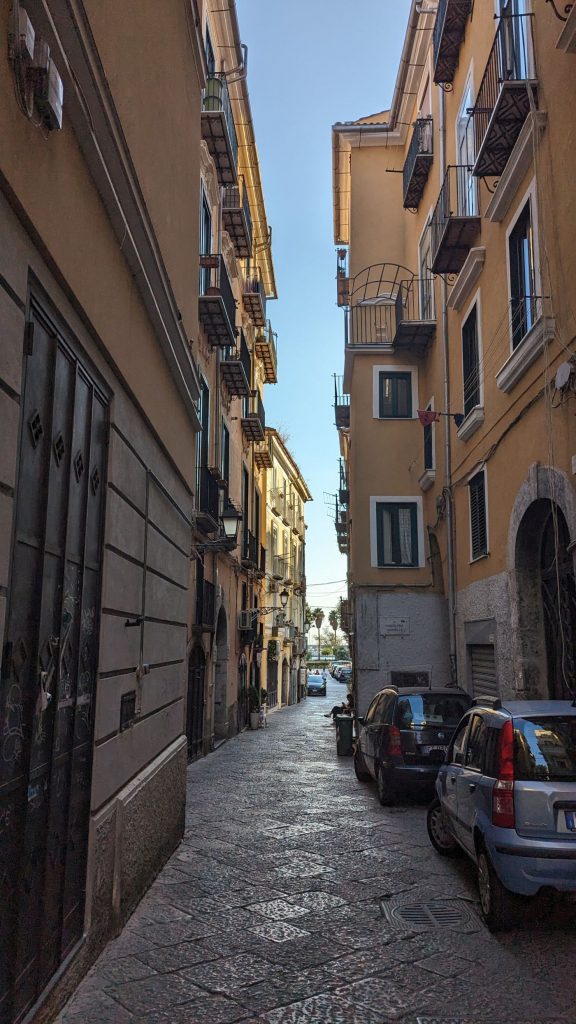

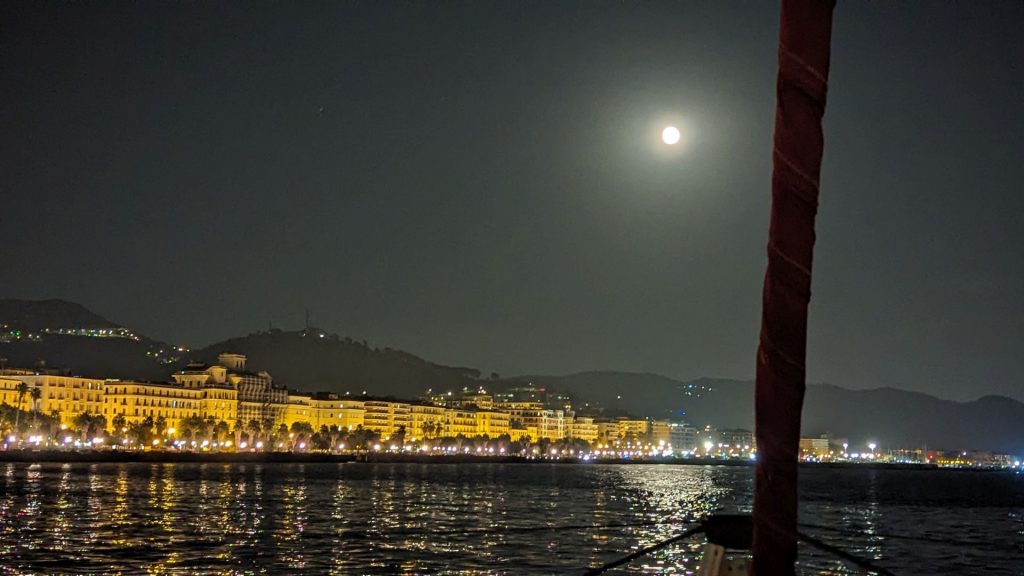
We will be heading to Agropoli then Venice and Cinque Terre next. Watch for pictures and stories in future posts!
